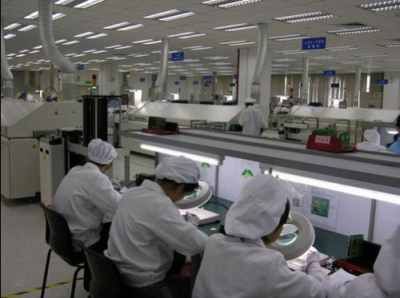 Advantages are not being leveraged fully mainly because of lack of funds, say experts.
Advantages are not being leveraged fully mainly because of lack of funds, say experts.
India enjoys a huge advantage of a great talent pool that comes at a low cost. However, experts from Samsung, IBM and Cisco say the advantages are not being leveraged fully mainly because of lack of funds and no collaborative work.
Vinod Kumar, general manager, GE Global Research, says one of things that are different in India as compared to other countries is the time duration and pace at which things happen, and the amount of money that goes into the activities.
“In a US scenario where GE has worked, there are programmes, worth $5 million and $10 million, where companies collaborate with government labs and universities and these will run in a way that the project is completed in five years,” said Kumar at a R&D summit earlier this week.
However, Kumar feels, India lacks such a pace or scale of getting things done.
“Short term does not mean that it does not have any innovation or R&D. But one should look at innovation in a phased manner. Try to get things to the market, even if it is a pilot or a test, and tweak your solution and move it to the next one. It should incrementally add value to the customer or market.”
Similarly Monica Agarwal, vice-president, India Systems Development Lab, IBM, said there was a lack of fora and platforms for people to collaborate and key strategy areas needed to be defined.
“Say we have smarter cities; the questions are who do we need to bring on the table, what are the things needed for the project, and what needs to be done in the next three years to come up with application products. Running it as a project and bringing it to definitive closure in a set period of time will make it a lot more of successful than now.”
Countries such as South Korea and Israel spend more than four per cent of the GDP on research and development (R&D) of new products and technologies. In contrast, the figure in India is less than one per cent. Of this the private sector’s contribution is only a third. There is an increased government focus to bring investment to India. Thus, now is seen as the ideal time to boost private sector participation in R&D.
Despite Bengaluru being a city where most MNCs have set up research centres and India projected to be the third largest hub for R&D by 2020, the percentage remains much lower than many nations that spend at least four to six per cent.
Experts also feel that the benefits of R&D is understood well by software companies, but not by manufacturing companies despite a greater potential for the latter. Aloknath De, CTO of Samsung, says the percentage spent by manufacturing companies on R&D is almost in decimals.
“The basic thing is intent, the understanding and belief that if you spend a percentage of your profits in R&D, it will bring in more development. Execution of this understanding is the key problem here,” said De. Samsung has 8,000 members working on R&D in India and it is the highest patent filer in the country.
Combined with the problem of unavailability of collaboration is the fact that smaller Indian companies find the cost of capital very high. The cost of borrowing in India is eight to nine per cent.
“Taking the example of Cisco, for every 100 patents that it files it is able to monetise six. The average investment in the patent is for three years, another three years is invested before that and borrowing is done two years in advance. Availability of cash is not a big issue for MNCs, but for a smaller company it is a big inhibitor. Very often smaller businesses do not want to take this risk,” said Angshik Chaudhuri, a global managing director at Cisco Systems Inc.
While most agree that India needs to increase the percentage spends on R&D to at least four per cent, they also believe that the structure followed in developed nations needs to be adopted in India.
Sriganesh Gandham, executive director and head of R&D at Hindustan Petroleum, says that in developed countries every small thing -- be it in the development or testing phase -- is counted as R&D whereas in India such a structure is lacking. At the same time IP-enabled services is not counted in R&D although they have such a component.
“If we count it right, the percentage will grow to two or even three per cent. As the market opens up, there will be more competition. Indian companies will start understanding that India is not their only market, the R&D investments will increase,” added Gandham.
Photograph: Paul Hackett/Reuters.










